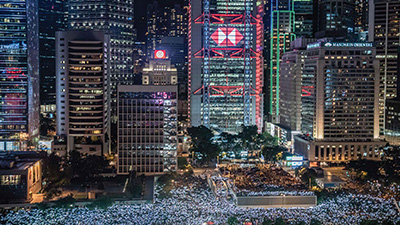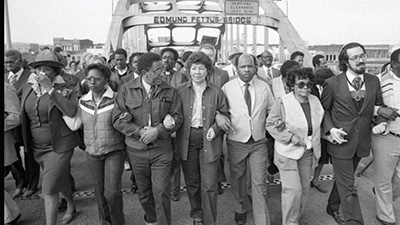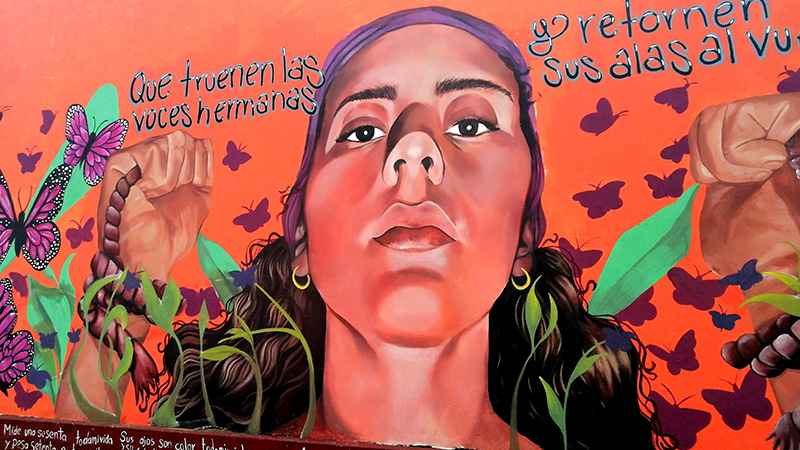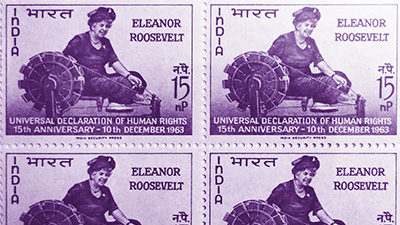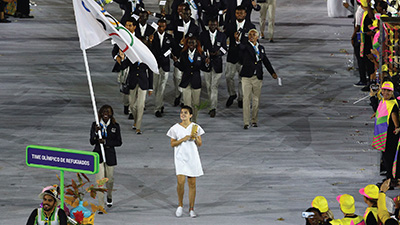Calls for Reform and Responses After 1900
Teacher Resources
Driving Question: How have global movements for equality changed social and political structures over time?
Where we are does not necessarily define who we are. How we identify ourselves has evolved considerably as the world has become more interconnected. Modern societies are woven together with long-distance relationships, frequent migrations, and shifting ethnic, national, and religious affiliations. Since 1200, a lot has changed about who we think we are and where we think we should be. But a lot has stayed the same. In this section, you’ll examine some of the identity-driven conflicts in our modern world, exploring what happens when new identities collide with old traditions.
Learning Objectives
- Explain how social categories, roles, and practices have been maintained and challenged over time.
- Use close reading skills to investigate the role international organizations play in our globalized world and how people have responded to increasing globalization.
Vocab Terms:
- civil disobedience
- climate change
- inequality
- multinational
- non-governmental organization
- regulation
Opener: Calls for Reform and Responses After 1900
To teach this lesson step, refer to page 3 of the Lesson 9.5 Teaching Guide.
What are rights and where do they come from? These questions will help you reflect on people’s rights in our global community.
The Trouble with Globalization
To teach this lesson step, refer to page 3 of the Lesson 9.5 Teaching Guide.
Does everyone benefit equally from globalization? Those who support globalization argue that it creates freedom and prosperity. But all around the world, many workers have had to shoulder the burdens of a world economy.
-
Guiding Questions
-
Before you read
Preview the questions below, and then skim the article. Be sure to look at the section headings and any images.
While you read
Look for answers to these questions:
- Who are the Zapatistas, and how did they react to globalization?
- What was the Zapatistas’ main complaint about NAFTA?
- What is direct action? What example does the article provide of direct action?
- What is austerity, and how is it an example of the downsides of globalization?
After you read
Respond to the following question: What would it take for you to engage in “direct action” and protest injustice in the streets?
Movements to End Racial Injustice
To teach this lesson step, refer to page 5 of the Lesson 9.5 Teaching Guide.
Although great strides have been made to achieve social justice and racial equality, there is still a long road ahead.
-
Guiding Questions
-
Before you read
Preview the questions below, and then skim the article. Be sure to look at the section headings and any images.
While you read
Look for answers to these questions:
- How did the experiences of the Second World War contribute to the fight against racial discrimination and segregation in the United States?
- What was the impact of civil disobedience campaigns in the 1950s and 1960s in the United States?
- What were some elements of the US Civil Rights movement that made their way to Latin America?
- How were Black movements in Latin America connected to Indigenous rights movements?
- How does the author connect struggles for racial liberation with struggles for gender equality?
After you read
Respond to the following question: How would you narrate the history in this article through the networks frame? What were the connections across regions and across groups in this article? How do you think these connections impacted struggles for equality in different regions?
Repatriation
As the world becomes more global, many communities struggle to assert their own identities and preserve their cultural heritage. This excerpt and activity will help you understand how different communities experience globalization.
Preserving the Past
To teach this lesson step, refer to page 6 of the Lesson 9.5 Teaching Guide.
The process of globalization threatens the existence of many Indigenous cultures and traditional ways of life. In this video, you will learn how the Pueblo and other Indigenous peoples are resisting globalization, and attempting to secure their past for their future.
-
Guiding Questions
-
Before you watch
Preview the questions below, and then review the transcript.
While you watch
Look for answers to these questions:
- According to Theresa Pasqual, why is it a mistake to refer to Pueblo historical sites and ancestral objects as “ruins” and “artifacts”?
- What challenges do Pueblo people face when trying to access places that are important to their history and culture today?
- Why does Brian Vallo say that “there’s no need to excavate” archaeological sites?
- What’s one problem that Dr. Swentzell mentions with returning human remains and cultural objects to the places from which they were removed?
- What are some examples of successful repatriation of remains and cultural items that Brian Vallo mentions?
After you watch
Respond to the following question: How does this video make you think differently about some of the other archaeological and historical evidence you’ve learned about?
Key Ideas
Global Feminism
To teach this lesson step, refer to page 7 of the Lesson 9.5 Teaching Guide.
Discussions about feminism and equal rights aren’t new, but they have changed over time. Investigate how feminist thought has evolved from antiquity to the present.
-
Guiding Questions
-
Before you read
Preview the questions below, and then skim the article. Be sure to look at the section headings and any images.
While you read
Look for answers to these questions:
- How did the Enlightenment and industrialization influence the rise of feminism?
- What tactics did women use in the first wave of feminism and what were their goals?
- How were the goals of second-wave feminism different from the first wave? What was the catalyst for second-wave feminism?
- How did feminist movements in non-Western parts of the world differ from those in the West?
- What is the focus of the third wave of feminism?
- How has feminism changed in the digital age?
After you read
Respond to these questions:
- How do you think feminism will change in the future?
- To what extent does this article help explain how social interactions and organization have been challenged over time?
Universal Rights
To teach this lesson step, refer to page 7 of the Lesson 9.5 Teaching Guide.
As globalization has spread in the twentieth and twenty-first centuries, the concept of human rights has spread along with it. In theory, that’s a good thing. But, as with globalization, the practice of protecting human rights has often been more “lumpy” than universal.
-
Guiding Questions
-
Before you read
Preview the questions below, and then skim the article. Be sure to look at the section headings and any images.
While you read
Look for answers to these questions:
- What is the Universal Declaration of Human Rights, and why was it written?
- What were some ways that oppressed people used the Universal Declaration of Human Rights immediately after it was signed?
- What is the fundamental problem facing people who want to make human rights universal?
- What do cultural relativists argue?
- Are human rights an invention of Western imperialists?
- What are some ways that globalization has helped spread human rights? What are some ways that it has endangered human rights?
After you read
Respond to the following question: Do you think that the concept of human rights is enough to protect people in the age of globalization?
UN Sustainable Development Goals
To teach this lesson step, refer to page 9 of the Lesson 9.5 Teaching Guide.
Looking for some end of the year fun? Read UN Sustainability Goals Tournament with Andrea Wong in the Community Forum.
The United Nation (UN) created a list of goals intended to make the world a healthier place to live in terms of climate, social justice, and overall economic and social equality. Choose one of these goals and explore what would need to be done to support it.
Transnationalism and the Revival of Nationalism
To teach this lesson step, refer to page 11 of the Lesson 9.5 Teaching Guide.
Does national identity bring people together? Or can it be a divisive force? This article focuses on nationalism and transnationalism in our contemporary world, and how it impacts communities around the globe.
-
Guiding Questions
-
Before you read
Preview the questions below, and then skim the article. Be sure to look at the section headings and any images.
While you read
Look for answers to these questions:
- How does national belonging and the world of nation-states complicate international sports competitions? Consider examples like Taiwan and Kosovo.
- Why did international and transnational ideas surge in the second half of the twentieth century?
- How has nationalism helped with postwar reconciliation in Rwanda?
- In the age of the nation-state, how has racially defined nationalism re-emerged?
- How do definitions of national identity exclude some people from cultural and political communities and resources?
After you read
Respond to the following questions:
- How do national identities shape your daily world, and the people and things you interact with?
- Are there transnational identities that shape the way you think about yourself and your daily interactions?
- What do you think the future of nationalism is? Will it continue to surge in the face of global challenges like climate change and pandemics, or will international and transnational solutions to these problems prevail?
Closer: Calls for Reform and Responses After 1900
To teach this lesson step, refer to page 13 of the Lesson 9.5 Teaching Guide.
Your students should have a lot of practice making and testing claims, but there is always room to grow. Give them feedback using the Claim Testing: Feedback Form.
“Overall, globalization is good.” That’s quite the claim! Test it, and other claims, as you bring together all that you’ve learned about globalization.
Indigenous Americans and Globalization
To teach this lesson step, refer to page 18 of the Lesson 9.5 Teaching Guide.
Indigenous Americans have played an important role in globalization since the beginning of the Columbian Exchange. Cultural and economic influences flowed both ways across the Atlantic and Pacific oceans. This video addresses some misconceptions about globalization and explores how the processes of globalization affected indigenous communities.
-
Guiding Questions
-
Before you watch
Preview the questions below, and then review the transcript.
While you watch
Look for answers to these questions:
- What are the two misconceptions about globalization that this video addresses?
- What are some examples of Indigenous Americans’ contributions to globalization?
- Who was Paul Cuffee Jr., and was globalization good for him?
- What sort of things do neoliberal policies promote?
- What is the Dakota Access Pipeline, and what does it tell us about the impacts of globalization on indigenous communities?
After you watch
Respond to the following question: What do historical examples of people resisting the changes connected to globalization share in common with the Dakota Access Pipeline protests?


